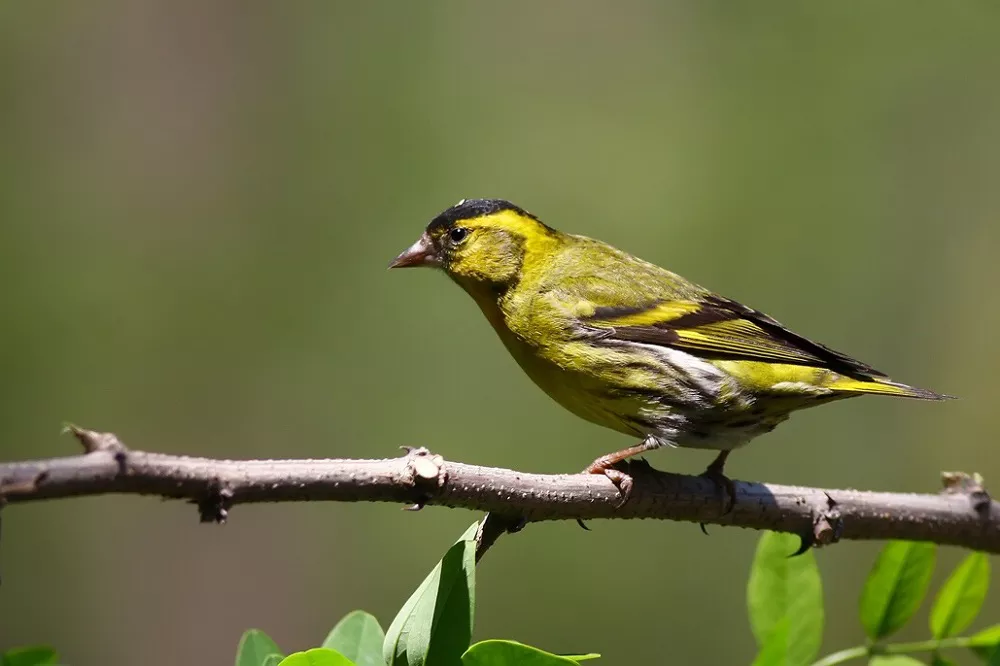Finches are popular birds known for their beautiful plumage and sweet melodies. Among the most common types of finches are the yellow finch and the goldfinch. While these two birds may look similar at first glance, they actually have some distinct differences that set them apart. In this article, we will explore the characteristics and habits of yellow finches and goldfinches, so you can learn how to tell them apart.
Taxonomy and Species
To clarify the confusion, it is important to understand the taxonomy of these birds. Yellow finches belong to the family Fringillidae, genus Spinus, and the species Spinus tristis, commonly known as the American goldfinch.
On the other hand, goldfinches fall under the family Carduelidae, genus Carduelis, and comprise several species, including the European goldfinch (Carduelis carduelis) and the lesser goldfinch (Carduelis psaltria). Hence, the American goldfinch is a specific type of yellow finch.
Physical Characteristics
The yellow finch, also known as the American goldfinch or wild canary, is a small songbird with bright yellow feathers. Males have black wings with white markings, while females have olive-green wings with yellow highlights. They have a conical beak which is perfect for cracking open seeds. Yellow finches grow up to 5 inches long and weigh up to 0.6 ounces.
On the other hand, the goldfinch has a more muted yellow color with black wings and tail feathers. The male’s head is black, and females have a brownish-gray head. They also have a conical bill for seed-eating, and their body measures about 4.5 inches in length and weighs about 0.4-0.7 ounces.
Habitat and Migration
Yellow finches are native to North America, where they are commonly found in meadows, fields, and open woodlands. They are year-round residents in many parts of the United States, but they migrate further south during the winter months. During breeding season, they prefer habitats with tall trees and shrubs where they build their nests.
Goldfinches are also native to North America and are commonly found in weedy fields, pastures, and along roadsides. During migration, they can be found in gardens and backyards across the country. Unlike yellow finches, goldfinches are late breeders. They typically start nesting in July or August and prefer to nest in open areas with scattered trees.
Diet
Both yellow finches and goldfinches are primarily seed-eaters. They feed on a variety of seeds, including thistle, sunflower, and dandelion. During the breeding season, they also eat insects for protein. Yellow finches are known for their preference for nyjer seeds, which can be found at most bird supply stores. Goldfinches, on the other hand, have a specialized diet that includes the seeds of plants like thistles and teasels.
Behavior and Vocalizations
Yellow finches are social birds that often gather in flocks during migration. They are known for their distinctive flight pattern, which is a series of undulating dips and rises. Their song is a sweet, warbling melody.
Goldfinches are also social birds and often travel in flocks outside of breeding season. They have a bouncy flight and a sweet, twittering song. Unlike yellow finches, goldfinches seem to enjoy swinging on the branches of trees and shrubs while feeding.
Conservation Status
Regarding conservation, the American goldfinch (yellow finch) holds a relatively stable population and is not currently considered threatened. However, some species of goldfinches, such as the European goldfinch, have experienced declines in certain regions due to habitat loss, pesticide use, and changes in agricultural practices. Conservation efforts are focused on preserving their natural habitats, promoting sustainable agriculture, and raising awareness about the importance of these species.
Conclusion
While yellow finches and goldfinches share some similarities in appearance and behavior, there are several key differences that set them apart. The yellow finch has brighter yellow plumage and black wings with white markings, while the goldfinch has a more muted yellow color with black wings and tail feathers. Yellow finches prefer habitats with tall trees and shrubs during breeding season, while goldfinches prefer open areas with scattered trees. Both birds eat primarily seeds, but goldfinches have a specialized diet that includes specific plant seeds. Understanding these differences can help birdwatchers and nature enthusiasts better identify and appreciate these beautiful birds.
Related Topics:
- What Does a Yellow Finch Look Like?
- What Do Goldfinches Eat? (What You Need To Know)
- What Does a Goldfinch Look Like?


 Facebook
Facebook  Instagram
Instagram  Youtube
Youtube 